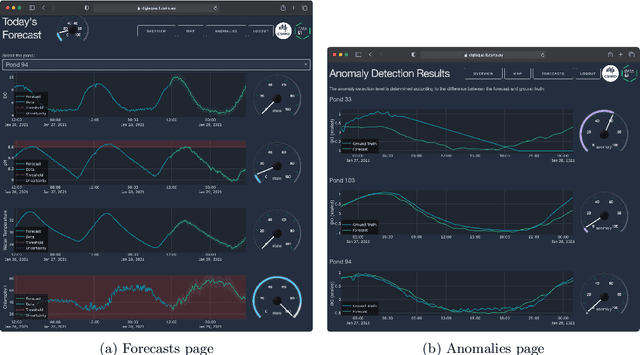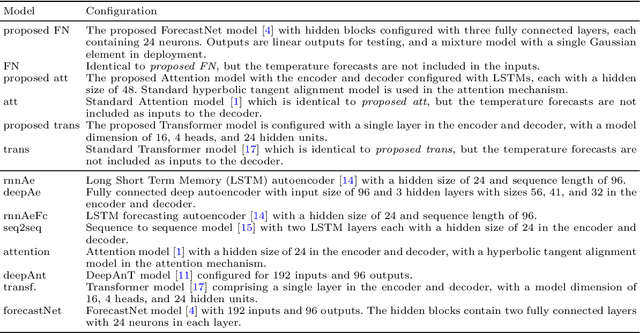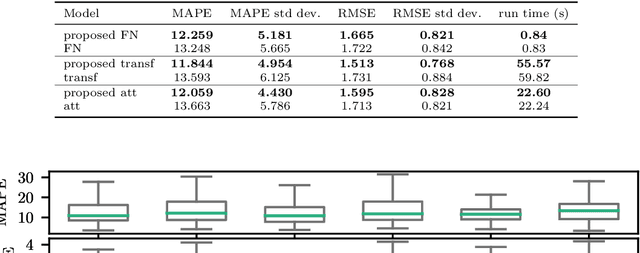Andrew Hellicar
Deep Learning for Prawn Farming: Forecasting and Anomaly Detection
May 12, 2022



Abstract:We present a decision support system for managing water quality in prawn ponds. The system uses various sources of data and deep learning models in a novel way to provide 24-hour forecasting and anomaly detection of water quality parameters. It provides prawn farmers with tools to proactively avoid a poor growing environment, thereby optimising growth and reducing the risk of losing stock. This is a major shift for farmers who are forced to manage ponds by reactively correcting poor water quality conditions. To our knowledge, we are the first to apply Transformer as an anomaly detection model, and the first to apply anomaly detection in general to this aquaculture problem. Our technical contributions include adapting ForecastNet for multivariate data and adapting Transformer and the Attention model to incorporate weather forecast data into their decoders. We attain an average mean absolute percentage error of 12% for dissolved oxygen forecasts and we demonstrate two anomaly detection case studies. The system is successfully running in its second year of deployment on a commercial prawn farm.
Efficient Orthogonal Parametrisation of Recurrent Neural Networks Using Householder Reflections
Jun 13, 2017



Abstract:The problem of learning long-term dependencies in sequences using Recurrent Neural Networks (RNNs) is still a major challenge. Recent methods have been suggested to solve this problem by constraining the transition matrix to be unitary during training which ensures that its norm is equal to one and prevents exploding gradients. These methods either have limited expressiveness or scale poorly with the size of the network when compared with the simple RNN case, especially when using stochastic gradient descent with a small mini-batch size. Our contributions are as follows; we first show that constraining the transition matrix to be unitary is a special case of an orthogonal constraint. Then we present a new parametrisation of the transition matrix which allows efficient training of an RNN while ensuring that the matrix is always orthogonal. Our results show that the orthogonal constraint on the transition matrix applied through our parametrisation gives similar benefits to the unitary constraint, without the time complexity limitations.
 Add to Chrome
Add to Chrome Add to Firefox
Add to Firefox Add to Edge
Add to Edge